What is fugu?
Fugu is a fish consumed mainly in Japan, China, and Korea, and is especially famous in Japan as a luxury food.
In general, tiger pufferfish is the most popular.
Despite being exceedingly delicious, fugu contains a tetrodotoxin, a deadly poison in its internal organs. As a result, chefs must undergo special training and certification to prepare it.
In Japan, only chefs with a national certification are allowed to handle fugu.
Fugu cuisine is diverse and includes sashimi (raw slices), tecchiri (hot pot), karaage (deep-fried), as well as dishes using the liver.
Among them, thinly sliced fugu sashimi is characterized by its clear, delicate texture and is often presented beautifully.
Fugu has been known in Japan since long ago, and became widely consumed by common people between the 17th and 19th centuries.
However, its toxicity has led to numerous bans on eating the fish.
In modern times, as research on fugu poison progressed, a safe way to eat fugu was established.
Particularly since the mid-20th century, consumption of fugu has increased significantly, and today it has established itself as a luxury food.
In recent years, fugu cuisine has diversified and is now offered not only in the traditional sashimi and nabe (hot pot) dishes, but also in various other forms, such as sushi, karaage, and hamburgers.
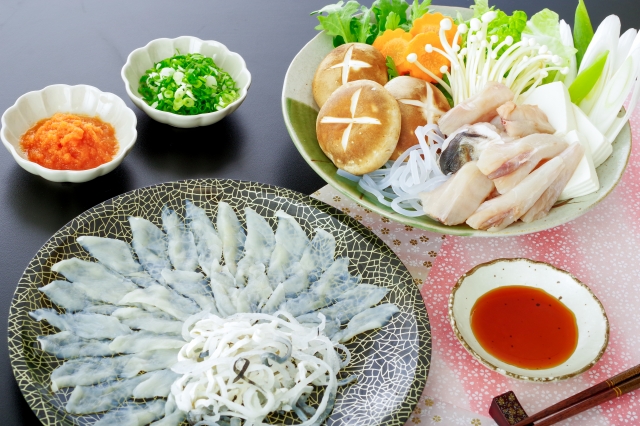
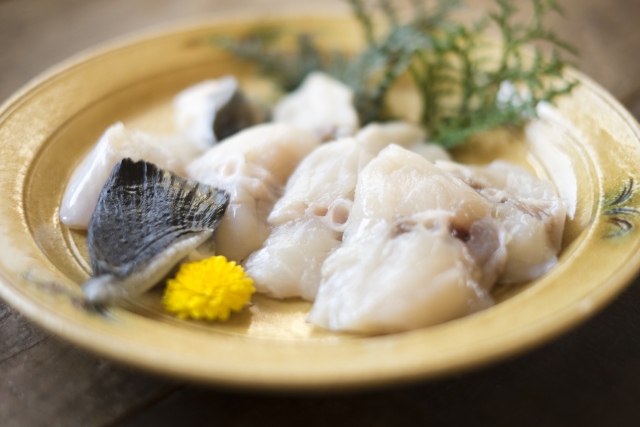
A Special Delicacy Once Loved by Samurai
In ancient Japan, fugu was considered a very dangerous fish because it contains a strong toxin. For this reason, many regions banned fugu dishes for a long time. However, historical stories say that some samurai and shoguns still wanted to “try the flavor at least once, even if it was dangerous,” and enjoyed eating fugu.
Because samurai valued courage and determination, they were often drawn to foods that were considered “dangerous but special,” like fugu. Some national leaders, known as shoguns, are also said to have been interested in the taste of fugu. At that time, cooking techniques were not yet fully developed, so eating fugu involved significant risk.
Meanwhile, in parts of western Japan where fugu was commonly caught, restrictions were looser than in other areas. In these regions, samurai and local leaders are believed to have enjoyed fugu prepared by skilled chefs, who carefully removed the poisonous parts and served the fish in various styles such as sashimi and hot pot.
Today in Japan, safety systems for handling fugu have been well established thanks to this long history. Only trained chefs with a specialized license are allowed to prepare fugu. Poisonous parts are strictly removed, and all dishes are handled safely according to national standards. Because of this, the fugu dishes served in modern Japan can be enjoyed with confidence.
Although samurai and shoguns once ate fugu with great caution, advancements in technique and strict regulations now allow travelers from around the world to enjoy this unique Japanese delicacy safely.
Varieties of fugu Cuisine
Below are some of the most common fugu cuisine.
Fugusashi (fugu sashimi)
Fugu meat is thinly sliced and arranged on a platter and is characterized by its translucent appearance and delicate flavor.
It is enjoyed with ponzu (citrus soy sauce) and condiments.
The dish is also called tessa in the Kansai region.
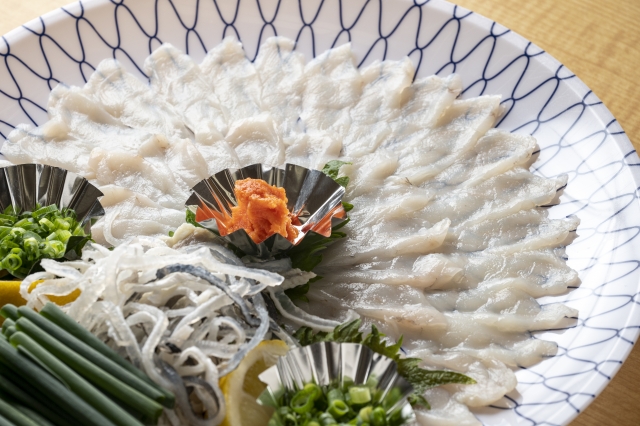
Fugu-nabe (fugu hot pot)
A hot pot dish made by simmering fugu meat and vegetables; it is popular during the cold season.
Its unique broth and the fugu flavor are irresistible.
The dish is also known as tecchiri in the Kansai region.
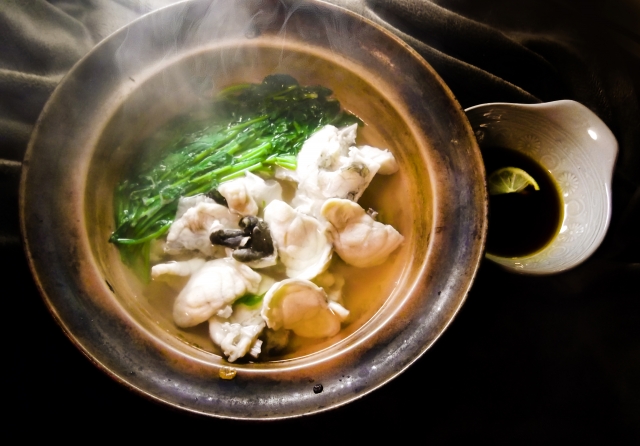
Fugu karaage (deep-fried fugu)
Fugu meat is coated with potato starch or flour and deep-fried.
This makes it crispy on the outside and juicy on the inside, and it goes perfectly with beer or other alcoholic beverages.
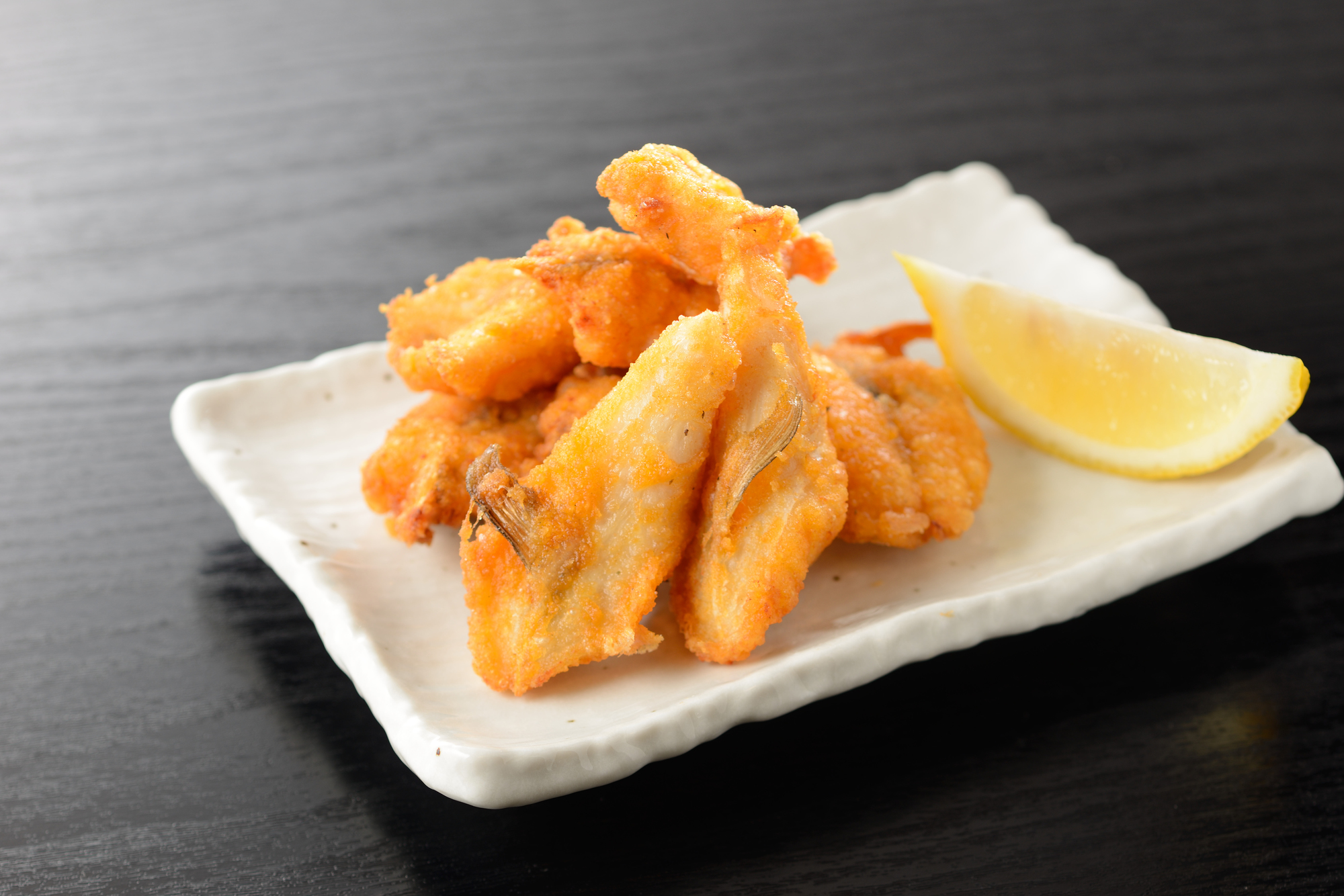
Fugu milt
Fugu milt (testes) has a creamy, deep flavor.
It can be grilled or eaten with ponzu.
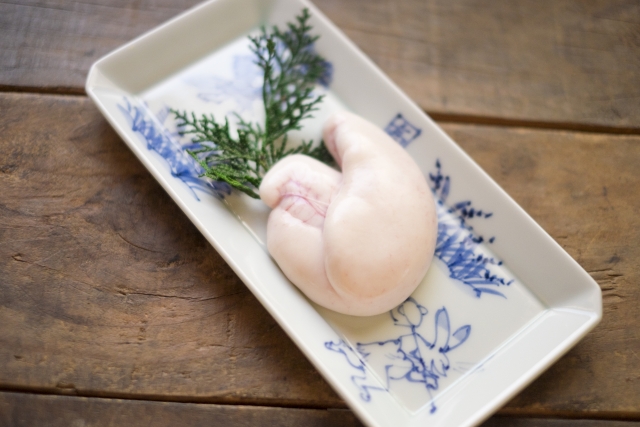
How to make fugu cuisine
How fugu sashimi and fugu-nabe are prepared is shown below.
First, it is essential to know that fugu chefs need a special license to thoroughly remove the poisonous organs and skin of the fish.
Fugusashi (fugu sashimi)
To start, chefs choose fresh pufferfish, break it down, and remove its edible parts.
The meat is then sliced into ultra-thin slices using a special knife called a fugubiki knife.
This slicing technique takes years of practice to master.
After slicing, the meat is arranged on a platter or other plates to present the transparent and delicate meat in a beautiful fashion.
Fugu-nabe (fugu hot pot)
Firstly, chefs select good quality fugu and slice the meat thinly, removing any parts that contain the toxin.
Special knife skills are required, and the thickness of the slices greatly affects the quality of the dish.
Then, ingredients such as Chinese cabbage, leeks, shiitake mushrooms, and tofu are cut into appropriate sizes.
Next, the broth for the pot is prepared.
It is usually made from a high-quality kombu kelp.
Sometimes, the bony parts of fugu are added to leave the delicious flavor of fugu in the broth.
The quality of this broth greatly determines the taste of the fugu-nabe.
Next, the hot pot is prepared by placing the broth in a pot and keeping it at the proper temperature.
Careful attention is also paid to the order and timing of adding the ingredients.
Once the pot is heated, vegetables such as Chinese cabbage and leeks, and the fugu meat are added.
Since the meat is sensitive to heat, it's essential not to overcook it.
How to eat fugu cuisine
The following explains how to eat fugu sashimi and fugu-nabe.
Fugusashi (fugu sashimi)
Prepare ponzu
Pour the ponzu sauce into a small dish.
Prepare condiments
Prepare the condiments to be served with ponzu.
It typically includes momiji-oroshi (grated chili pepper and daikon radish), green onions, and yuzu.
Eat with ponzu
Take a slice of fugu sashimi with chopsticks.
You can take either one or multiple slices at once.
First, try eating them by lightly dipping in ponzu.
Eat with ponzu and condiments
When you have enjoyed the taste of fugu, mix the momiji-oroshi with ponzu on the plate and eat it together with the fugu.
You can also wrap the leek with fugu and dip it in ponzu.
Be sure to enjoy the dish in a variety of ways.
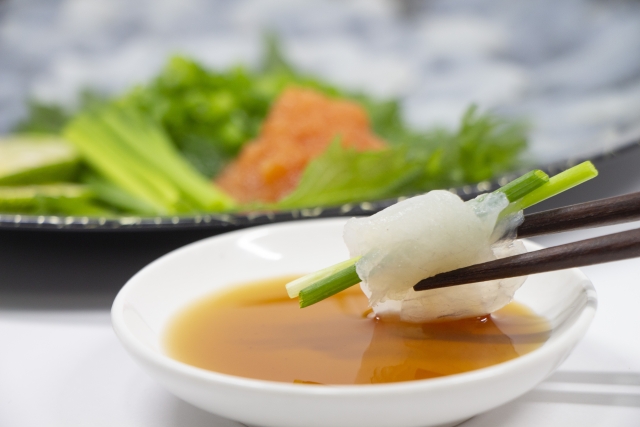
Fugu-nabe (fugu hot pot)
Prepare ponzu
Pour the ponzu sauce into a small dish.
Prepare condiments
Prepare the condiments to be served with ponzu.
This typically includes momiji-oroshi and green onions.
Eat with ponzu
Take the cooked fugu and vegetables from the pot and serve them in a small dish.
Dip them in ponzu and enjoy.
Eat with ponzu and condiments
Once you have enjoyed the taste of fugu and other ingredients, mix the momiji-oroshi with ponzu on the plate and eat it together with the fugu.
Be sure to enjoy the dish in a variety of ways.
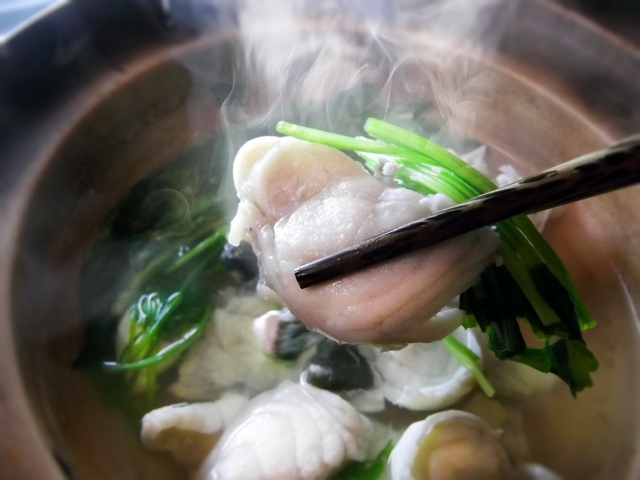
Prepare beaten egg
After finishing most of the ingredients in the hot pot, it is time for the finishing dish.
Crack an egg into a dish and mix with chopsticks.
Put rice and beaten egg in pot
Add the rice and beaten egg to the hot broth.
Add the remaining condiments (in this case, green onions and nori seaweed) if available.
Eat finishing dish
When sufficiently cooked, serve the rice or other ingredients on your dish.
If you need more flavor, season with salt or soy sauce.
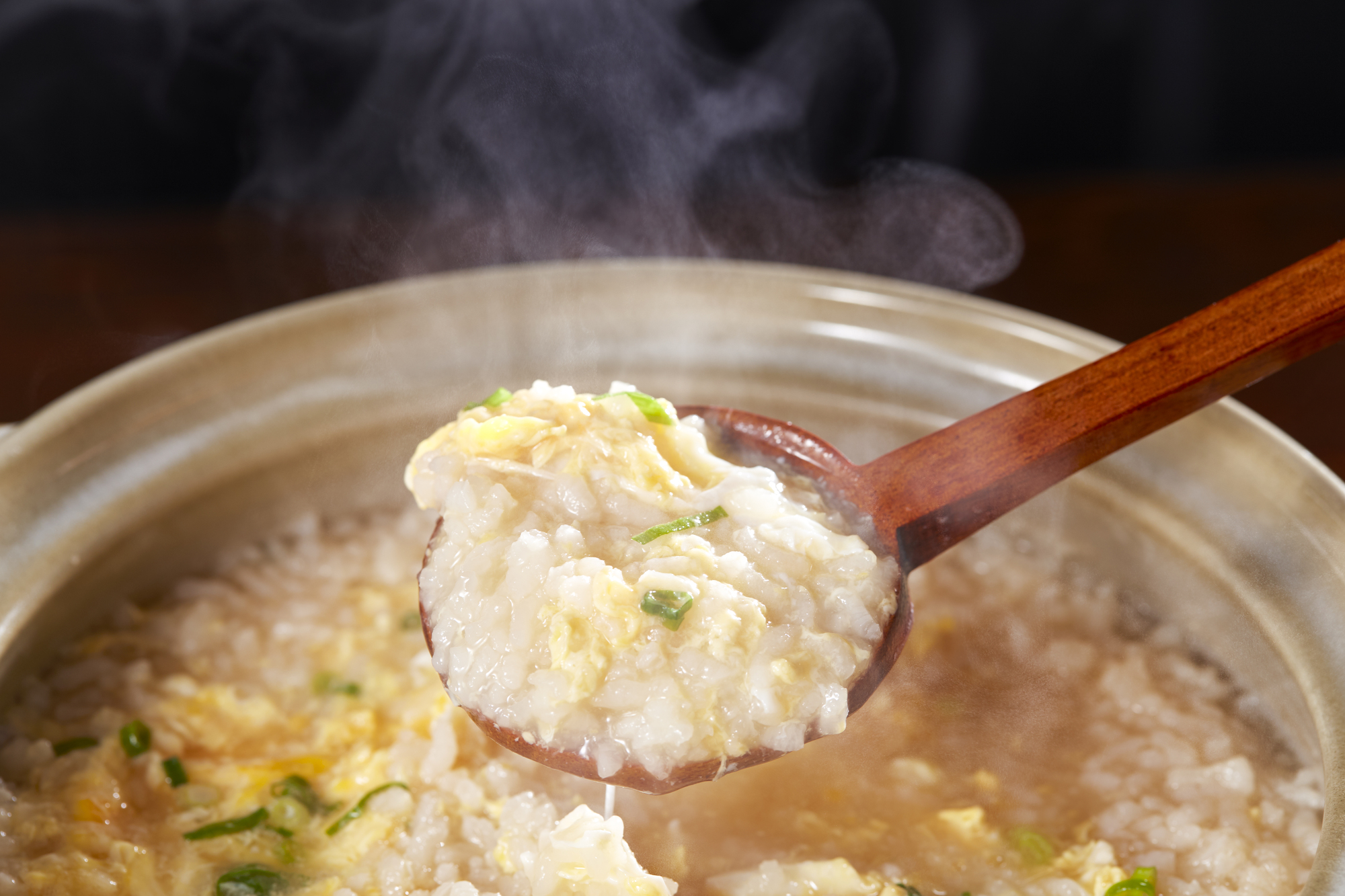
People’s reaction when eating

Search Restaurants by Destination

Search Restaurants by Popular Cuisines




